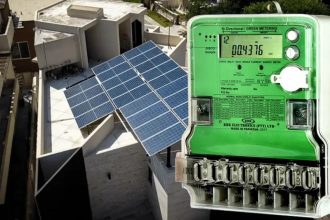The PML-N is desperately trying to become the first government to see the IMF’s lending programme to its logical end. However, in this attempt, it has resorted to expensive means of borrowing, forcing many experts to question the logic behind the move.
The recent $956-million borrowing is in addition to the $500 million that the government raised late last year by floating the Eurobond by paying very high interest rates.
The pattern has heightened debt sustainability concerns. The IMF itself has recently revised upwards its projections of the country’s total external debt to over $70 billion by June this year.
“The government borrowed the money to meet the IMF condition of increasing Net International Reserves (NIR) held by the State Bank of Pakistan to $9.3 billion till December 2015,” said officials at the Ministry of Finance.
The IMF calculates the NIR by excluding debt-related obligations on central bank reserves. Pakistan was required to increase NIR by another $2.4 billion within three months.
The desperation shown by the finance ministry exposes the hollowness of the much-trumpeted foreign currency reserves of $20.689 billion that also include roughly $5 billion held by commercial banks.
Out of $956 million, $442 million was contracted in December alone from three commercial banks without ensuring competitive bidding, showed official documents. The Ministry of Finance arranged $325 million from United Bank Limited (UBL), an additional $75 million from Noor Bank Dubai and $42.83 million from Dubai bank.
The cumulative borrowings from Noor Bank increased to $340 million, as the government had already borrowed $265 million from Noor Bank in September last year. It also borrowed $375 million from the Suisse Bank in September last year.
The commercial banks borrowings were part of the $4.2 billion that the government arranged from July through December last year.
According to officials and independent economists, the government’s reliance on borrowings has increased alarmingly after receipts from exports plunged.
Huge borrowings from private commercial banks are going unnoticed and present a new phenomenon, as the previous governments never availed that much short-term borrowing from private commercial banks.
“The government did not ensure competitive bidding before raising the money. It also did not get approval of the Economic Coordination Committee of the Cabinet (ECC) either,” added the sources. The spokesman for the Ministry of Finance was not available for comments. However, a senior official insisted that the ministry had the approval of the prime minister.
Two former officials of the finance ministry said that the rules do not allow for exemptions from competitive bidding and this could become a serious issue for the government.
“When there are $20 billion reserves then why do we need to borrow from commercial banks,” questioned former finance minister Dr Hafiz Pasha, adding that the country was not facing any balance of payment pressures, therefore, it needed to explain this move.
In its latest report, the IMF has projected that by the end of current fiscal year 2015-16, Pakistan’s total external debt will surge to $70.2 billion – for the first time in history. Earlier, it had projected external debt at about $68 billion. It has also stated that the debt-to-GDP ratio will remain at 63.2% against its earlier projection of almost 1% decline in the ratio.
“Pakistan’s public debt-to-GDP ratio remains vulnerable to shocks due to still significant reliance on short-term debt instruments and, consequently, high gross financing needs”, noted the IMF. It added strengthening of debt and public finance management is needed to further reduce fiscal risks.





